Madlener House
4 West Burton Place
Chicago, Illinois 60610
Telephone: 312.787.4071
info@grahamfoundation.org
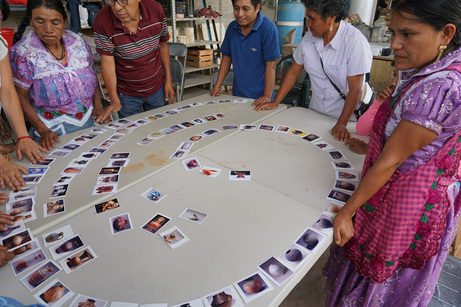
Kythzia Barrera Suárez and Diego Mier y Terán, directors of Innovando la Tradicion, have dedicated their lives to unlearn contemporary design practice and the paradigms of modern society through the work of indigenous and rural potters of Oaxaca, Mexico. Together with María Bautista they discuss the Learning Community of Potters, a space for exchanging knowledge from a centuries-old craft that is rooted in a culture of balance, community, and close attention to nature.
Innovando la Tradición is a collective and multidisciplinary nonprofit that seeks to revitalize traditional pottery in Oaxaca, Mexico to bring visibility to the profound knowledge of this centuries-old craft. The organization positions pottery as a tool of economic stability, cultural development, an agent of social cohesion, and a source of inspiration in the construction of new paradigms for a more balanced relationship with the world. This mission is realized through workshops, courses, and skill exchanges to share the work of master potters and pass on the discipline to younger artisans. Colectivo 1050º is the commercial arm of the nonprofit Innovando la Tradición, and sells the products that are handmade in Oaxaca by traditional potters and designers. The company operates on principles of fair trade, with a strong emphasis on ecologically sound practices.
María Bautista León was born into a Mexican family dedicated to pottery and she considers herself as potter since the age of eight. She has shared this ancestral wisdom with other people who have an interest in learning how to mold and create with their hands through this noble activity. Additionally, León has collaborated on the project Mujeres y Maíz (Women and Maize), which builds paths for food sovereignty and good living alongside women who sell corn products like toasts, tortillas, and tamales.
Kythzia Barrera is an industrial designer, and cofounder of Innovando la Tradición and Colectivo 1050º, organizations that support the development of pottery communities in Oaxaca, Mexico. Barrera’s work strengthens the bridges between art, craft, and design to foster social and human change. Honesty and open disclosure from the conventional and privileged designers position shapes an essential part of Kythzia's creative leadership as Head of Innovando Tradición and dynamic CEO of Colectivo 1050º. She holds a master’s degree in social and sustainable design by The Design Academie Eindhoven, Netherlands; in addition to having completed postgraduate coursework in ceramics at the School of Art and Design Helsinki, Finland; and in crafts and design at Kyoto Institute of Technology. She previously served as sustainable design professor at Centro and Universidad Iberoamericana, Mexico.
Diego Mier y Terán is cofounder and director of Innovando la Tradición and Colectivo 1050º and is interested in the social and ethical dimension of design and its power as an agent of change. He holds a master’s degree in type design from Royal Academy of Art, The Hague, Netherlands. Terán teaches across many universities in Mexico and previously ran the Workshop of Utopias at the Universidad Iberoamericana which prepared students to challenge the conventions of contemporary society and design practice.
Image: Innovando la Tradicion archive
For more information on the exhibition, Tatiana Bilbao Estudio: Unraveling Modern Living, click here.
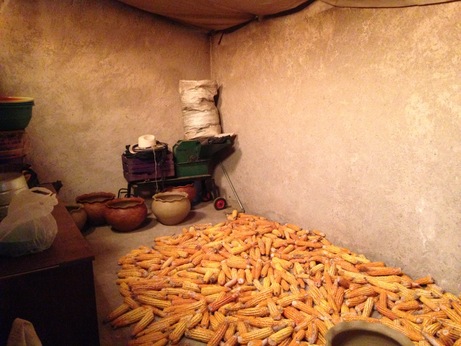
María Bautista teaches the traditional way of making pottery in Chiapas, which she learned when she was eight years old. The instruction begins with sharing how clay is harvested in the fields through to firing clay works in a wood kiln. Bautista instructs how to hand-build clay using essential tools to create vessels used to eat and drink. This program also includes creating and enjoying a traditional maize-based drink.
Innovando la Tradición is a collective and multidisciplinary nonprofit that seeks to revitalize traditional pottery in Oaxaca, Mexico to bring visibility to the profound knowledge of this centuries-old craft. The organization positions pottery as a tool of economic stability, cultural development, an agent of social cohesion, and a source of inspiration in the construction of new paradigms for a more balanced relationship with the world. This mission is realized through workshops, courses, and skill exchanges to share the work of master potters and pass on the discipline to younger artisans. Colectivo 1050º is the commercial arm of the nonprofit Innovando la Tradición, and sells the products that are handmade in Oaxaca by traditional potters and designers. The company operates on principles of fair trade, with a strong emphasis on ecologically sound practices.
María Bautista León was born into a Mexican family dedicated to pottery and she considers herself as potter since the age of eight. She has shared this ancestral wisdom with other people who have an interest in learning how to mold and create with their hands through this noble activity. Additionally, León has collaborated on the project Mujeres y Maíz (Women and Maize), which builds paths for food sovereignty and good living alongside women who sell corn products like toasts, tortillas, and tamales.
Kythzia Barrera is an industrial designer, and cofounder of Innovando la Tradición and Colectivo 1050º, organizations that support the development of pottery communities in Oaxaca, Mexico. Barrera’s work strengthens the bridges between art, craft, and design to foster social and human change. Honesty and open disclosure from the conventional and privileged designers position shapes an essential part of Kythzia's creative leadership as Head of Innovando Tradición and dynamic CEO of Colectivo 1050º. She holds a master’s degree in social and sustainable design by The Design Academie Eindhoven, Netherlands; in addition to having completed postgraduate coursework in ceramics at the School of Art and Design Helsinki, Finland; and in crafts and design at Kyoto Institute of Technology. She previously served as sustainable design professor at Centro and Universidad Iberoamericana, Mexico.
Diego Mier y Terán is cofounder and director of Innovando la Tradición and Colectivo 1050º and is interested in the social and ethical dimension of design and its power as an agent of change. He holds a master’s degree in type design from Royal Academy of Art, The Hague, Netherlands. Terán teaches across many universities in Mexico and previously ran the Workshop of Utopias at the Universidad Iberoamericana which prepared students to challenge the conventions of contemporary society and design practice.
Image: Innovando la Tradicion archive
For more information on the exhibition, Tatiana Bilbao Estudio: Unraveling Modern Living, click here.
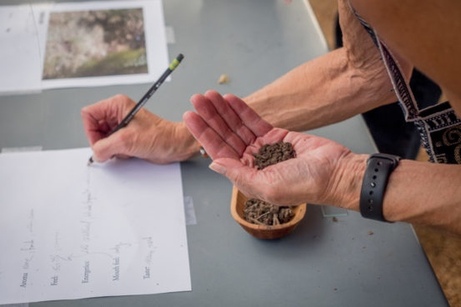
The practice of eating earth or soil-like substrates such as clay or chalk has a deep anthropological history and is practiced by various cultures around the world. For this program Klehm has collected soil from various locations around Chicago and her team will guide participants through a tasting to sensorially explore the minerals and biological processes that cause the different ‘notes’ and flavors of soil.
As part of the ongoing exhibition, Klehm and her collaborator and colleague Jacob Blecher will present their Deep Maps of two earthen sites in Chicago: Madlener House (Gold Coast) and Raber House (Englewood) will be presented along with soil corings on trays made from local clay Klehm has dug and processed.
Nance Klehm is internationally respected for her work on land politics and soil health. Her work has received extensive national and international media coverage amongst those: Time Magazine, BBC Canada, MSN, Los Angeles Times, Philadelphia Inquirer and is mentioned in many books, including Leila Darwish’s Earth Repair (2013), Sandor Katz’s The Revolution Will Not Be Microwaved (2006) and Alexandra Toland's Field to Palette: Dialogues on Soil and Art in the Anthropocene (2019). She won the 2010 Utne Visionary Prize and is a member of the Curry-Stone Design Prize Social Design Circle. In addition, she has lectured broadly in museum and university settings as well as for countless community groups worldwide. Klehm is the author of: The Ground Rules: a manual to reconnect soil and soul (2016) and The Soil Keepers: Interviews with practitioners on the ground beneath our feet (2019) and is working on a manual on microbial remediation of contaminated soils. Most recently, she was the subject of the independent documentary, Weedeater. Nance splits her time between La Villita, a densely packed, urban neighborhood in Chicago and her 50 acres of land in The Driftless Region. http://www.socialecologies.net
Jacob Blecher is a writer, grower, and horticulturalist based in Wilmington, NC. With Social Ecologies, he helped develop a city-wide community composting and bioremediation project in Chicago called The Ground Rules. He holds a BA from Yale University and an MA in Political Science from the University of Chicago.
Image: Nance Klehm, documentation from Hyperobjects – Mineral
Free Exposure Soil Tasting with artist and ecologist Nance Klehm at Capri in Marfa, Texas, August 24, 2018. Courtesy Ballroom Marfa. Photo: Rowdy Lee Dugan
For more information on the exhibition, Tatiana Bilbao Estudio: Unraveling Modern Living, click here.
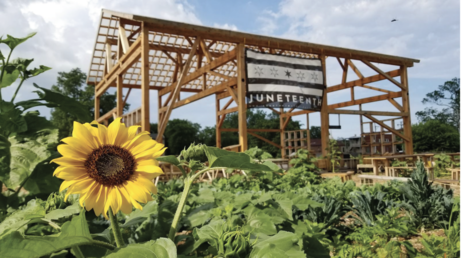
Hosted by Sweet Water Foundation at The Commons, 5749 S Perry Avenue, Chicago IL
Sweet Water Foundation is excited to welcome participants at its flagship site, The Commons, for a two-hour tour and hands-on experience on Wednesday, October 23. During the workshop, participants will be challenged to explore their relationship with the world around them, integrate Sweet Water Foundation’s practice of Regenerative Neighborhood Development in their lives, and consider the relationship between places where one lives, where things grow, and where things are built or torn down. Participants will engage in hands-on activities such as farming/gardening techniques, carpentry, and printmaking.
Sweet Water Foundation practices regenerative neighborhood development, a creative social justice method, that creates safe and inspiring spaces by establishing healthy, intergenerational communities that transform the ecology of once-“blighted” neighborhoods. The Foundation utilizes a blend of urban agriculture, art, and education to transform vacant spaces and abandoned buildings into economically and ecologically productive and sustainable community assets that produce engaged youth, skilled workers, art, locally-grown food, and affordable housing. These principles are realized in the flagship Foundation project, the Perry Avenue Commons, encompassing approximately three acres on the South Side of Chicago.
Image: The Thought Barn at The Commons, Sweet Water Foundation
For more information on the exhibition, Tatiana Bilbao Estudio: Unraveling Modern Living, click here.
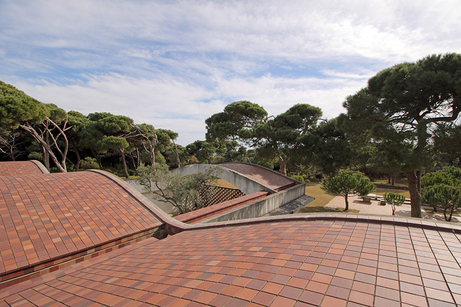
La Ricarda or Casa Gomis, completed in 1963, is one of the key midcentury buildings in Spain. Barcelona-born architect Antonio Bonet Castellana, who trained with Le Corbusier and Josep Lluís Sert, designed the house while living in Buenos Aires. Working closely with the clients, Ricardo Gomis and Inés Bertrand via letters, Bonet designed every aspect of the building, from the overall organization to the materials, interior details, and furniture. Besides its architectural merit, the house is also remarkable for the critical cultural role it has played in Catalonia, particularly during Franco’s dictatorship, when the Gomis Bertrand family supported and welcomed artists and intellectuals such as John Cage, Merce Cunningham, Josep Mestres Quadreny, Carles Santos, Joan Prats, Robert Gerhard, Villèlia, Antoni Tàpies, Joan Miró and Joan Brossa, transforming it into a haven for artistic experimentation.
Having grown up in Casa Gomis, Marita Gomis discusses the design and construction of the iconic house, the cultural activities it hosted, its relevance more than five decades after it was built, and the efforts and challenges to preserve it.
This talk accompanies the exhibition La Ricarda: An Architectural and Cultural Project organized by MAS Context, on view October 12, October 19, and October 26, 2019 at Lawrence & Clark.
This event is a partner program of the 2019 Chicago Architecture Biennial.
Marita Gomis, along with her five siblings, is the owner of Casa Gomis, one of the key midcentury buildings in Spain and the house she grew up in. Commissioned by Ricardo Gomis and Inés Bertrand, it was designed by Antonio Bonet Castellana and completed in 1963. A haven for artistic experimentation, the house hosted many cultural activities and continues to be a must-see destination for architecture students and professionals from around the world. Marita and the rest of the Gomis Bertrand family has diligently preserved it in its original state with the help of local architects Fernando Álvarez and Jordi Roig.
MAS Context is nonprofit a quarterly journal created by MAS Studio in Chicago that addresses concerns that affect the urban context. Each issue delivers a comprehensive view of a single topic through the active participation of people from different fields and perspectives who, together, instigate the debate.
Lawrence & Clark is a collection-based gallery run by Jason Pickleman. The collection spans more than 1000 works in all media. The storefront gallery is an opportunity to exhibit privately held artwork in a public setting. The gallery is open every Saturday from 1 p.m. until 5 p.m. and by appointment. For more information, please visit: lawrenceandclark.com.
Image: Casa Gomis, El Prat de Llobregat, 2019. © Iker Gil.
For more information on the exhibition, Tatiana Bilbao Estudio: Unraveling Modern Living, click here.
Unless otherwise noted,
all events take place at:
Madlener House4 West Burton Place, Chicago
GALLERY AND BOOKSHOP HOURS
2025 Chicago Architecture Biennial
SHIFT: Architecture in Times of Radical Change
Sep 19, 2025–Feb 28, 2026
Wed–Sat, 12–5 p.m.
To make an appointment, email: bookshop@grahamfoundation.org
CONTACT
312.787.4071
info@grahamfoundation.org
Accessibility
Events are held in the ballroom on the third floor which is only accessible by stairs.The first floor of the Madlener House is accessible via an outdoor lift. Please call 312.787.4071 to make arrangements.
Copyright © 2008–2025 Graham Foundation. All rights reserved.
 PREVIOUS POSTS
PREVIOUS POSTS